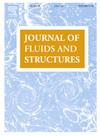Progressive flutter prediction using flight data with limited sensors and actuators
IF 3.5
2区 工程技术
Q1 ENGINEERING, MECHANICAL
引用次数: 0
Abstract
In this work, the flutter prediction theory and method originally developed by the author based on the dynamic eigen decomposition technique are modified for applications to flight flutter simulation and testing of airplanes. Towards this end, frequency responses to control surface excitations are processed at subcritical conditions and the dynamic eigenvalues calculated herein are extrapolated to higher dynamic pressures. To obtain enough responses, the flight test is repeated progressively such that the data set is augmented as more responses are added. By using a recursive formula that relates frequency responses at different dynamic pressures it is possible to expand the columns in the transfer function matrix by integer multiples, thus making the measurements and the excitations equal in number. For demonstration of the new methodology, a tapered wing with four flaps is modeled using ten flexible wing modes and four rigid flap modes. Theodorsen’s theory accounting for motion of the control surfaces is employed for unsteady aerodynamics. It is shown that the proposed scheme as applied to the simulated flight data not only results in extremely accurate predictions of flutter but also is procedurally compatible with the present-day practices, e.g., aeroelastic damping extrapolation, providing a viable option for flutter prediction based on flight test data.
基于有限传感器和驱动器的飞行数据的渐进式颤振预测
本文对笔者基于动态特征分解技术提出的颤振预测理论和方法进行了改进,将其应用于飞机的颤振仿真和试验。为此,在亚临界条件下处理控制面激励的频率响应,并将这里计算的动态特征值外推到更高的动压力。为了获得足够的响应,飞行测试逐步重复,这样数据集就会随着更多响应的增加而增加。通过使用递归公式来描述不同动压下的频率响应,可以将传递函数矩阵中的列扩展为整数倍,从而使测量和激励在数量上相等。为了验证新方法,采用10种柔性翼模和4种刚性翼模对带有4个襟翼的锥形翼进行了建模。非定常空气动力学采用了Theodorsen控制面运动理论。结果表明,所提出的方案应用于模拟飞行数据,不仅可以得到非常准确的颤振预测,而且在程序上与当前的实践(如气动弹性阻尼外推)相一致,为基于飞行试验数据的颤振预测提供了一种可行的选择。
本文章由计算机程序翻译,如有差异,请以英文原文为准。
求助全文
约1分钟内获得全文
求助全文
来源期刊

Journal of Fluids and Structures
工程技术-工程:机械
CiteScore
6.90
自引率
8.30%
发文量
173
审稿时长
65 days
期刊介绍:
The Journal of Fluids and Structures serves as a focal point and a forum for the exchange of ideas, for the many kinds of specialists and practitioners concerned with fluid–structure interactions and the dynamics of systems related thereto, in any field. One of its aims is to foster the cross–fertilization of ideas, methods and techniques in the various disciplines involved.
The journal publishes papers that present original and significant contributions on all aspects of the mechanical interactions between fluids and solids, regardless of scale.
 求助内容:
求助内容: 应助结果提醒方式:
应助结果提醒方式:


